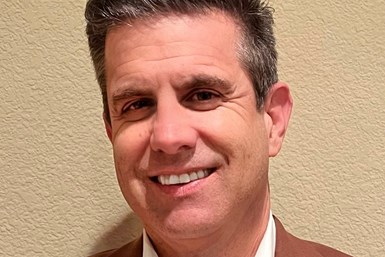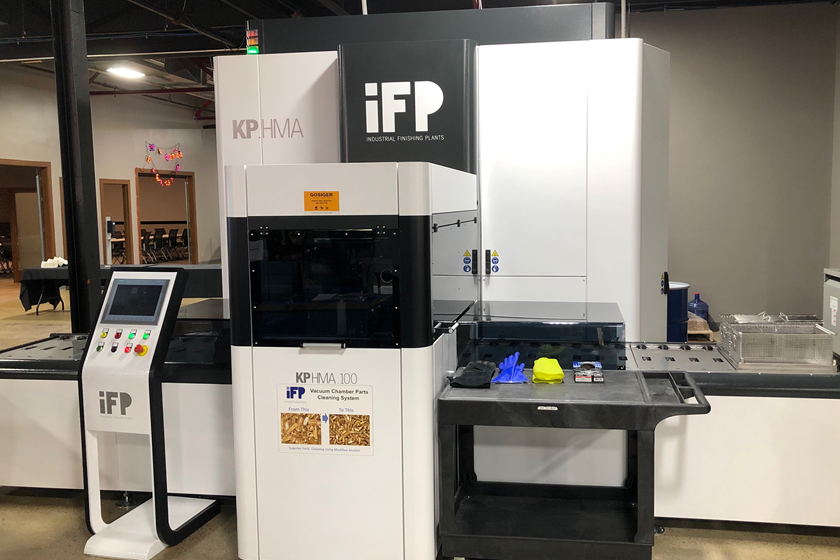An Interview with Incoming MFASC President Vincent Noonan, CEF
Vincent Noonan, CEF, Vice President Strategic Operations at Sheffield Platers, has been named the new president of the Metal Finishers Association of Southern California. Check out his recent interview with Products Finishing.
Edited by Scott Francis

Noonan
Photo Credit: MFASC
The Metal Finishers Association of Southern California (MFASC) has announced Vincent Noonan, CEF as its incoming president, succeeding Justin Guzman of Aircraft Xray Laboratories (Huntington Park, Calif.). Noonan, currently Vice President Strategic Operations at Sheffield Platers (San Diego, Calif.), has been involved in the metal finishing industry for more than 35 years. His background includes seven years at Technic Inc. working as a technical service engineer and later in sales, as well as 13 years at MacDermid Enthone, which included stints as a technical liaison serving in Asia and later as a Western regional sales manager. Noonan brings his years of experience to bear as he takes the reins amid important negotiations with the California Air Resources Board (CARB) over a proposed rule that would phase out hexavalent chromium finishing operations in the state. Noonan recently took time out of his busy schedule to chat with PF about his goals as MFASC’s new president.
Tell us about your current role with Sheffield Platers.
Featured Content
As Vice President Strategic Operations my role is twofold. My first focus is managing major accounts in the electronics sector. Secondly, I am working with ownership (Dale and Mark Watkins) and our executive team to ensure that our 3-, 5- and 10-year strategic plan are on track and attainable. This means we look for new markets and opportunities that are needed in the industry; in turn, this will drive revenue, keeping us on the path to long-term sustainability. At Sheffield, it’s a very collaborative environment — and that goes from the bottom up to the top. Dale Watkins, the owner and president and I, are always on the floor checking in with everyone and looking for ideas to make us more efficient. If anyone has thoughts on how to turn parts quicker or to make something work better than how we’re doing it today, we want to know. That collaborative environment affords us the ability to make quick decisions. If we need to make a pivot on a process or a product, it’s done in real time.
Why do you think it’s important to be involved in associations?
When you’re invested in the industry, you need to have passion for making change. At the state level, the industry needs the associations to work to find ways to help the environmental justice community, as well as keep jobs in California. What we’re doing now is trying to drive change within the industry, and at the same time drive change with the way our board addresses these many issues. We want to tackle these challenges/opportunities in ways that continue to shine a light on the positive things we do as surface finishing experts.
Talk about your goals as incoming president for the MFASC.
The first is to continue to represent the association regarding regulations and rulemaking in California. Regulation has to be sensible and it has to be collaborative.
When we worked with the AQMD [Air Quality Management District] on Rule 1469, they originally proposed a rule that there was no way we could comply with. But with the work of Bryan Leiker [executive director of the combined Metal Finishers Association of California (MFACA)], our lobbyist Jerry Desmond, with an assist from Jeff Hannapel and Christian Richter [The Policy Group], representing the NASF; we were able to get in a room and negotiate rule 1469. To be clear, before 1469 was implemented by the AQMD, Surface Finishers had already reduced 95.5% of chrome emissions emanating from their facilities. Even today our association is still willing to continue discussions to work on drafting sensible emission-based rules for the future.
Having said that, today we find ourselves in the middle of the same kind of process with CARB regarding their proposed hexavalent chromium phase-out — despite the fact that decorative chrome is one of the smallest sources of emissions, 99% of these chrome emissions come from mobile emitters, such as trucks and trains. So, one of the goals is to continue to work with everyone involved to try to make rules that are fair and equitable. Sensible emission-based rules will always be our goal. This type of rulemaking will continue to cut down on emissions and keep these well-paying jobs in the same neighborhoods the environmental justice communities are fighting for,
Another goal is further alignment with the National Association for Surface Finishing (NASF). If the state and regional chapters become subsections of NASF we’ll have much greater power and leverage than as separate little groups. So, one of my goals is not only to push that alignment for Southern California and Northern California, but across the board for all surface finishing associations.
You also serve on the national board for AESF as VP. Can you talk about that work?
The Foundation’s three core areas are education, research and scholarships. The AESF Foundation was formed with the goal of providing distinct learning platforms: Classroom Courses, Web-Based Courses, Home Study Courses and Custom Courses, which are tailored to the individual needs of public and private entities in the Surface Finishing Industry. The AESF is the gold standard in finishing industry education, and the exclusive grantor of industry certifications, from basic CEF (Certified Electroplater Finisher) to MSF (Master Surface Finisher).
When you look at the way college admissions have gone and the amount of debt that people are piling up, not everybody is a fit for college. So, why not work with local Junior colleges and trade schools to take our educational platform and determine if we can have it accredited. Maybe a two-year certificate of achievement could be a path that drives people to want to be in the industry? Can we work with these educational institutions to put together certificates showing that this person has expertise in this field? They could be hired immediately. We’re always starving for smart people, and we need new ideas to continue to build an educated workforce.
In addition to the regulatory issues you mentioned, finishers are facing other challenges such as supply chain disruptions and the rising costs of raw materials. Would you mind talking about efforts to address these problems?
When it comes to supply chain issues, the one thing we can do as an association is educate our members and work with the suppliers in the industry to provide their best timelines for easing. You would be very surprised how many finishing businesses don’t understand the method or feel empowered enough to pass on cost increases. When our suppliers place surcharges on materials such as nickel and hypo [sodium hypophosphite, widely used in nickel plating as a reducing agent] our costs as surface finishers increase. By passing those costs on in the form of surcharges to our customers, we can stay profitable. We know as the easing of the supply chain starts, the suppliers will lower or eliminate those surcharges. We in turn add surcharges to our invoices. That allows you to send a message to the customer that we’re all facing these challenges together and that as we see an easing from suppliers, those surcharges can be reduced or removed. We look at this sharing of ideas as a benefit to the association membership.
What is your hope for the future of the finishing industry?
I want these businesses to be here 35, 50, 100 years from now. It’s about doing things the right way and that’s how we survive. It’s about real advances and being able to drive that change, showing that we are a technologically advanced group of businesses that can make an impact in the world, which includes environmental leadership. We’re here to make that connector last longer, we’re here to make that tailpipe more corrosion resistant, as it is shiny, we’re here to make that electric vehicle stay on the road for an extra few years which is going to help the environment and we’re here to make sure that plane stays in the air. We are Surface Finishers; we are professional, technology leaders and we’re going to do it the right way.
RELATED CONTENT
-
Masking for Surface Finishing
Masking is employed in most any metal finishing operation where only a specifically defined area of the surface of a part must be exposed to a process. Conversely, masking may be employed on a surface where treatment is either not required or must be avoided. This article covers the many aspects of masking for metal finishing, including applications, methods and the various types of masking employed.
-
An Overview of Electroless Nickel Plating
By definition, electroless plating is metal deposition by a controlled chemical reaction.
-
Smut and Desmutting
Question: I am new to this industry and have heard about smut and desmutting operations.



















